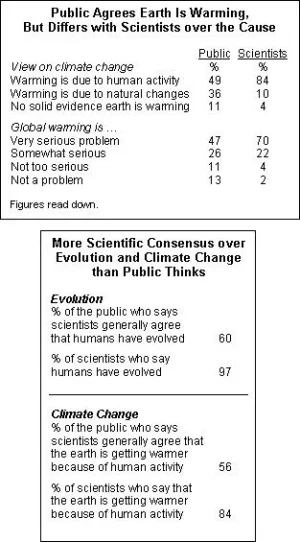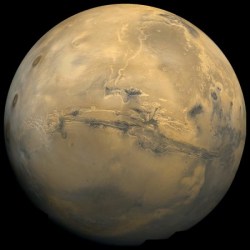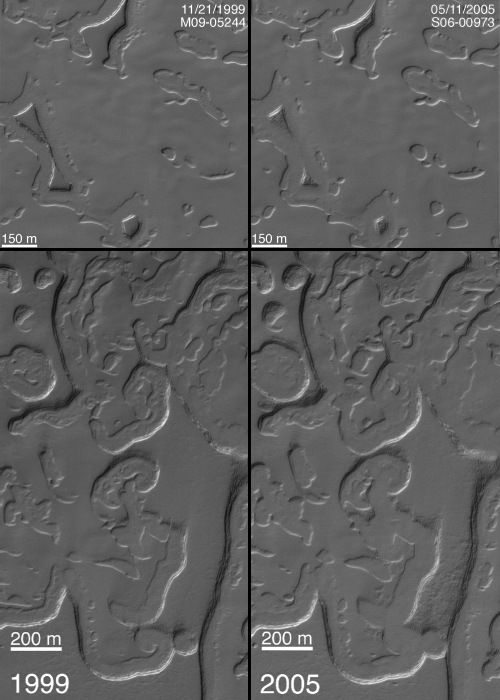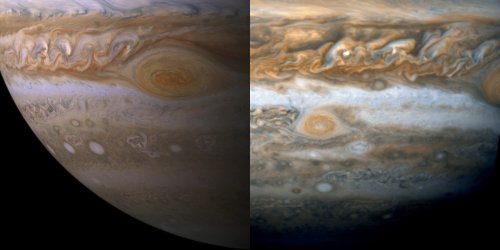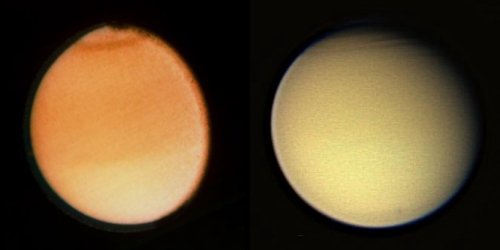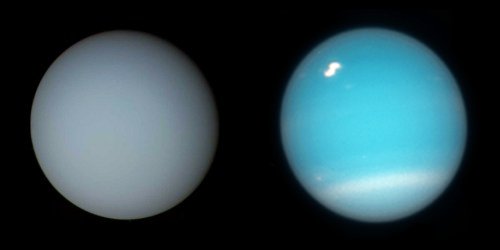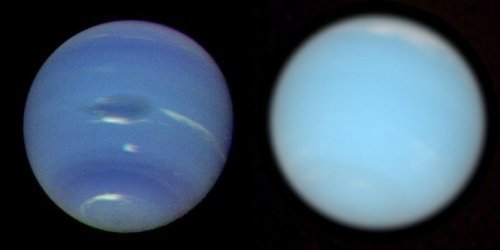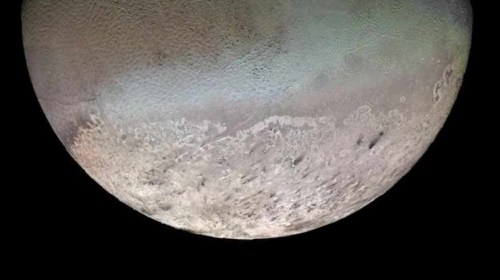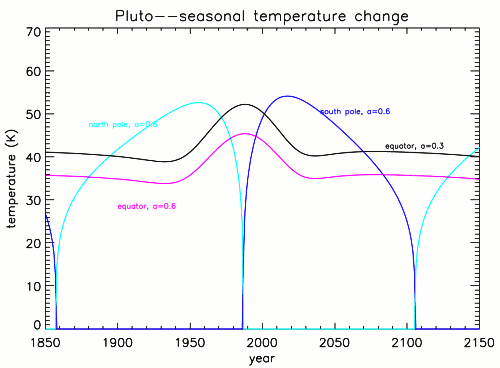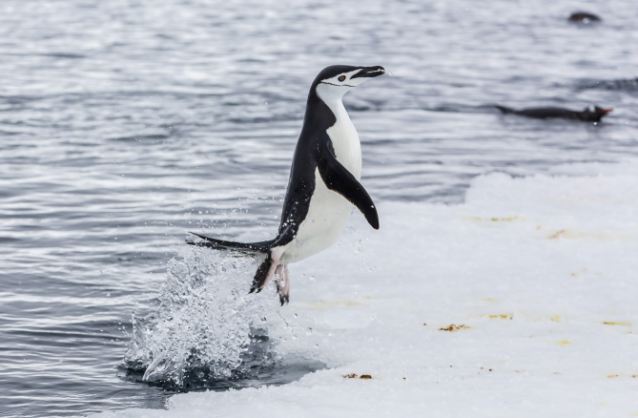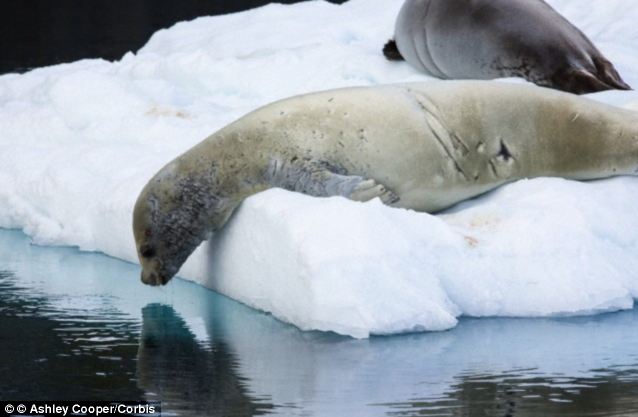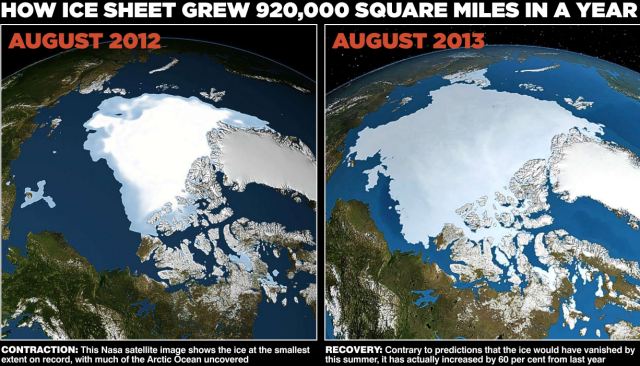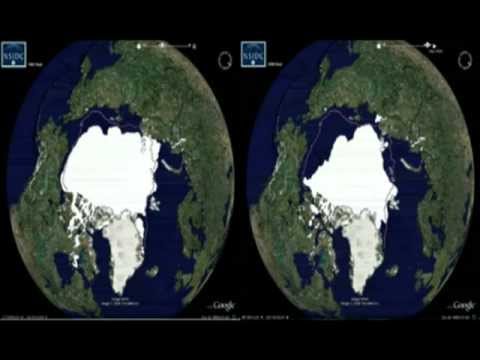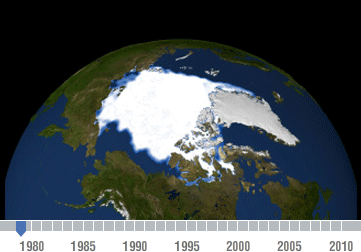http://www.johnstonsarchive.net/environment/warmingplanets.html
[h=2]Global warming on other planets?[/h] compiled by Wm. Robert Johnston
last modified 15 October 2007
Contents:
Introduction:
Recently reports have circulated about global warming occurring on other planets and satellites in the solar system. These reports have been misunderstood by global warming believers as well as global warming skeptics. This article is intended to review the actual observations regarding these planets and moons, plus place the topic in perspective.
Some background:
Believers in global warming hold to what I will call the anthropogenic global warming hypothesis. This involves multiple claims: (1) anomalous global warming is now occurring on Earth; (2) this warming is the result of anthropogenic (man-made) greenhouse gas emissions; (3) unnatural levels of global warming will occur during the next century; (4) the consequences of this warming will be disastrous; and (5) specific, immediate public policy actions are necessary to mitigate this coming disaster. While some claim that the scientific community agrees with these claims, in reality scientists have come to a variety of conclusions on all five claims, and many scientists may agree with some but reject others. Taken as a whole, the scientific evidence does not support such an extreme position. (For more on this, see
this page).
Observations of several planets and moons in our solar system show climate change is occurring on these bodies. This is held by some skeptics of global warming to prove that climate change is natural, refuting claims about the nearly exclusive role of mankind in climate change on Earth. Believers have countered that none of these observations have any relationship to natural influences on the Earth's climate. Both claims are wrong.
Part of the problem is a misunderstanding of natural influences on the Earth's climate. The total solar irradiance, or flux of solar energy arriving at the Earth, is well measured and has varied by only about 0.1% in the last few decades. Believers correctly point out that this can only directly produce a temperature change of about 0.07° C on Earth. They err, however, in claiming or implying that this is the only possible Sun-climate link. Considerable evidence supports the hypothesis that solar influences have indirect effects on the Earth's climate, with the potential of contributing to a greater fraction of recent observed climate change.
Some solar output varies by much more than 0.1%, such as UV solar radiation and magnetic activity. One proposed mechanism in particular suggests that variations in solar magnetic activity affect the amount of galactic cosmic rays reaching the Earth. This indirectly influences climate because these cosmic rays affect the formation of clouds which reflect more or less sunlight back to space depending on solar activity, consequently changing the Earth's climate. Such indirect mechanisms could in principle produce most of the modern observed change in global temperature. Studies to date show correlations supporting these claimed mechanisms but parts of the casual link have yet to be confirmed (unsurprisingly, research dollars are scarce when it comes to investigating natural influences on climate).
The relevant point is that the Sun-climate link proposed by scientists skeptical of global warming claims is indirect and involves mechanisms particular to the Earth system. The fact that we have not observed large changes in total solar irradiance, or large climate shifts on other planets, does nothing to refute the claim that the Sun-Earth climate link is significant. At the same time, some and perhaps even all of the extraterrestrial climate shifts are from mechanisms with no bearing on the Earth's climate. This boils down to the fact that we don't fully understand climate change, either here or elsewhere in the solar system. Those that claim we do (and particularly that we can concentrate on a single mechanism for climate change on Earth) are seriously wrong from a scientific perspective.
Climate change reports in the solar system:
Our ability to make long-term comparative climate observations elsewhere in the solar system is very limited. Only in a few cases have we had spaceprobes observing particular planets or moons long enough to discuss climate on timescales of decades. Further, the outer planets have orbital periods of decades: this means that their seasonal cycles also occur over decades, such that changes we observe on shorter time periods may just be seasonal. That said, here are reports of climate change:
Mars: Various spacecraft have observed Mars from orbit from 1971 to the present, many able to provide a long baseline of climate observations. In 2001 Malin et al. (2001) found that images of Mars' south polar cap taken one Martian year apart showed small retreats (of about 1-3 meters) in the cover of frozen carbon dioxide. This frozen CO[SUB]2[/SUB] sublimes directly from ice to gas in Mars' thin atmosphere. Observations over the next few Martian years' (one Martian year = 1.88 Earth years) showed continuing retreat, resulting in expanding pits in the residual polar cap (Benson and James, 2005; Thomas et al., 2005; James et al., 2007). This retreat has now been observed over four Martian years. Several global warming believers have been quick to state that this is a regional climate change. However, Fenton et al. (2006) and Fenton et al. (2007) have identified trends in changes in the reflectivity of the surface dust on Mars from 1976 to 2000. From observed albedo changes they have used models to estimate a global annual air temperature increase of 0.65° C. The direct cause of this predicted temperature change is a change in the distribution of darker dust on Mars' surface, and the resulting warming could be a factor in the retreat of Mars' south polar ice. One proposed root cause of this climate change could be slight shifts in Mars' axial tilt or orbital eccentricity: such changes have also been proposed as key drivers in changing Earth's climate between glacial and interglacial conditions (i.e. starting and ending ice ages). These shifts involve very long timescales on Mars as well as Earth, making this an inadequate explanation for the changes observed currently. Internal variations in Mars' climate, as opposed to influences from solar output changes, are likely at work, but this issue is unresolved.
| [h=6]Mars in the 1970s. (Credit: Viking Project, USGS, NASA).[/h]
[h=6]Changes in Mars' south polar cap from 1999 to 2005. (Credit: MSSS, NASA).[/h] |
[TD="width: 10"]
[/TD]
| |
Jupiter: Jupiter is a gas giant with a thick atmosphere of hydrogen and helium; the observable surface is actually the cloudtops. Jupiter has been observed by several spacecraft: flybys include Pioneers 10 and 11 in 1972, Voyagers 1 and 2 in 1979, and New Horizons in 2007; the Galileo orbiter provided long-term observations of Jupiter from 1995 to 2003. Further, the Hubble Space Telescope has been able to observe Jupiter for years. The atmosphere of Jupiter is very dynamic, with cloud belts and circular storms, the largest being the Great Red Spot, known for 300 years. Several noteworthy changes in Jupiter's atmosphere have been observed in recent years. Three storms merged in 1998-2000, producing what became a new Red Spot in 2005 (Marcus et al., 2006). Baines et al. (2007) describe additional recent changes in Jupiter's clouds. While these changes are not yet understood, the internal energy and dynamics of Jupiter are sufficient to provide mechanisms for changes of these magnitudes. Periodic changes and upheavals have been observed in Jupiter's atmosphere for many decades.
|
[h=6]Jupiter in 2000 and 2006. The Great Red Spot is at upper right in both images. Left image shows several white spots (left center) which merged to form the new Red Spot, seen in the right image (left of center). (Credit: NASA, JPL, SSI; NASA, ESA, A. Simon-Miller).[/h] |
[TD="width: 10"]
[/TD]
| |
Titan: Titan is the largest moon of Saturn and has a thick atmosphere of nitrogen and methane. It was observed closeup during Voyager 1 and 2 flybys in 1980 and 1981, and by Cassini from 2004 to the present. Lorenz et al. (1999) using Hubble Space Telescope observations found that the relative brightness of the northern and southern hemispheres had changed from 1994 to 1997. The amount and timing of changes were different at different wavelengths. As they discussed, these changes are understood to be seasonal: Titan's seasons have a 29-year cycle, corresponding to Saturn's orbital period about the Sun. Cassini has since shown that Titan's atmosphere is quite dynamic and has provided evidence of methane-driven weather, analogous to the water-driven weather on Earth. The changes in Titan's brightness are believed to represent changes in haze particles, possibly from transport between hemispheres as the seasons change.
|
[h=6]Titan in 1981 and 2005. Color differences in the two images mostly result from the different cameras used and differences in processing. (Credit: NASA, JPL; NASA, JPL, SSI).[/h] |
[TD="width: 10"]
[/TD]
| |
Uranus: Uranus is a gas giant with a thick atmosphere. The only closeup visit to Uranus was a flyby by Voyager 2 in 1986. Earth-bound telescopes, however have revealed slight changes in the brightness of Uranus over the last 50 years (Lockwood and Thompson, 1999; Lockwood and Jerzykiewicz, 2006; Hammel and Lockwood, 2007). These changes are easily explanable as seasonal changes. The seasonal cycle of Uranus is 84 years, matching its orbital period; further, Uranus has a high axial tilt, such that by the 1980s the south pole of Uranus is presented almost face on towards the Sun--and at the same time, to the Earth. The extreme changes likely contribute to changes in the cloud cover on Uranus.
|
[h=6]Uranus in 1986 and 2005. Color differences in the two images mostly result from the different cameras used; differences in bright cloud cover are real. (Credit: NASA, JPL; NASA, ESA, M. Showalter).[/h] |
[TD="width: 10"]
[/TD]
| |
Neptune: Like Uranus, Neptune is a gas giant with a thick atmosphere of hydrogen, helium, and methane. Voyager 2 is the only spacecraft to observe Neptune close up, during a flyby in 1989, but Neptune has been long observed by Earth-bound telescopes. Using such observations over decades, several studies have reported on changes in Neptune's brightness over the last 50 years (Lockwood and Thompson, 2002; Lockwood and Jerzykiewicz, 2006; Hammel and Lockwood, 2007). Given that Neptune's seasons vary with a 164-year period, matching its orbital period about the Sun, seasonal changes likely contribute to the brightness changes, either through changes in the clouds in Neptune's atmosphere, changes in the portion of Neptune visible from Earth, or both. However, Hammel and Lockwood (2007) suggest that the details in the variations can't be explained as seasonal changes alone. They found some correlation between the variations and changes in solar activity--along with correlations between Neptune's brightness and the average global temperature on Earth. If there is a link between the Sun and the climate of Neptune, it would be indirect: their data indicate about a 12% brightening of Neptune from 1950 to 2005, which would necessarily involve changes in Neptune's clouds.
|
[h=6]Neptune in 1989 and 2005. Differences in the two images mostly represent the different cameras used. (Credit: NASA, JPL; NASA, ESA, E. Karkoschka, H. B. Hammel).[/h] |
[TD="width: 10"]
[/TD]
| |
Triton: Triton is the largest moon of Neptune and has a very thin atmosphere of nitrogen and methane. Triton has only been observed closeup during Voyager 2's brief flyby in 1989, but astronomers have observed Triton using ground-based telescopes and the Hubble Space Telescope orbiting Earth. Importantly, observations of stellar occultations by Triton (where Triton passes in front of a star) have allowed astronomers to deduce properties of its atmosphere. In this way, Elliot et al. (1998) were able to report that Triton's atmosphere had thickened between 1989 and 1997. They found that at an altitude of 48 km above Triton's surface, the atmospheric pressure increased about 65% from 1995 to 1997, with the temperature increasing 2° C in that period. This implied roughly a doubling of the pressure at Triton's surface from 1989 to 1997, with a corresponding surface temperature increase of about 2° C. These changes are likely seasonal changes. Triton, like Neptune, has seasons with a 164-year cycle. Currently, the south pole of Triton is in summer. This has warmed the surface enough to vaporize nitrogen frosts on the surface, revealing darker ices below that absorb more sunlight and warm further. The nitrogen contributes to a thicker atmosphere and eventually freezes as frost in the northern hemisphere where it is winter (in 82 years the situation with be reversed).
|
[h=6]Triton in 1989. Bright bluish areas towards the top are frost deposits. (Credit: NASA, JPL).[/h] |
[TD="width: 10"]
[/TD]
| |
Pluto: Pluto has a thin atmosphere of nitrogen and methane, and its surface is covered with various ices including methane, nitrogen, and carbon monoxide. The orbital period of Pluto (and thus its seasonal cycle) is 248 years, and its eccentric orbit results in Pluto receiving much more solar radiation near perihelion (which last occurred in 1989) then during the rest of its orbit. Like with Triton, astronomers have used stellar occultations to observe Pluto's atmosphere. From 1988 to 2002, such observations showed that the pressure in Pluto's atmosphere at a fixed height had doubled (Elliot et al., 2003; Sicardy et al., 2003). (This fixed height is about 10-90 km above Pluto's surface, depending on where it's surface is.) This was somewhat surprising, given that Pluto was moving further from the Sun. However, seasonal changes may be important here, given that the peak of southern hemisphere summer on Pluto is yet approaching. Changes on Pluto involve the evaporation of surface ices from warming regions to add to atmospheric gases, which can migrate and refreeze in cooler locations. This results in changes in the bright or dark regions on Pluto's surface and changes in its overall reflectivity (Hansen and Paige, 1996; Brown, 2002; Pasachoff et al., 2005). Pluto's atmosphere was observed during another stellar occultation in 2006, showing that the atmosphere has become more transparent since 1988 (Elliot et al., 2007) but apparently no additional warming. The warming well beyond Pluto's perihelion could be explained by high thermal inertia or darkening of surface materials (Pasachoff et al., 2005).
|
[h=6]Estimated seasonal changes in surface temperature on Pluto at different locations.[/h] |
[TD="width: 10"]
[/TD]
Conclusion:
To recap: the changes observed in recent years on Jupiter, Titan, Uranus, and Triton are understood as normal and/or seasonal changes. Changes on Mars, Neptune, and Pluto are not fully understood:
- Changes in Mars' south polar cap may represent climate change, but this is likely due to phenomena particular to Mars.
- Changes in Neptune's brightness do seem to correlate with changes in the Sun, but the linking mechanism (if any) is unknown.
- Changes in Pluto's atmosphere seem to be seasonal; work is ongoing on this topic.
In the cases of Mars, Neptune, and Pluto, our understanding is incomplete. They may prove to have no connection to mechanisms for natural climate change on Earth. At the same time, some global warming believers have been too hasty in dismissing these observations. Still, they do demonstrate that we don't fully understand climate change.
References:
- Baines, K. H., et al., 2007, "Polar lightning and decadal-scale cloud variability on Jupiter," Science, 318:226-229.
- Benson, J. L., and P. B. James, 2005, "Yearly comparisons of the martian polar caps: 1999-2003 Mars Orbiter Camera observations," Icarus, 174:513-523.
- Brown, M. E., 2002, "Pluto and Charon: formation, seasons, composition," Annual Rev. Earth and Planetary Science, 30:307-345.
- Elliot, J. L., et al., 1998, "Global warming on Triton," Nature, 393:765-767.
- Elliot, J. L., et al., 2000, "The prediction and observation of the 1997 July 18 stellar occulation by Triton: More evidence for increasing pressure in Triton's atmosphere," Icarus, 148:347-369.
- Elliot, J. L., et al., 2003, "The recent expansion of Pluto's atmosphere," Nature, 424:165-168.
- Elliot, J. L., et al., 2007, "Changes in Pluto's atmosphere: 1988-2006," Astronomical Journal, 134:1-13.
- Fenton, L. K., P. E. Geissler, and R. M. Haberle, 2006, "Global warming on Mars," AGU Fall Meeting 2006, abstract #P23A-0047.
- Fenton, L. K., P. E. Geissler, and R. M. Haberle, 2007, "Global warming and climate forcing by recent albedo changes on Mars," Nature, 446:646-649.
- Herbert, B. D., B. Buratti, B. Schmidt, and J. Bauer, "Photometric evidence for volatile transport on Triton," AGU Fall Meeting 2003, abstract #P51B-0443.
- Hammel, H. B., and G. W. Lockwood, 2007, "Long-term atmospheric variability on Uranus and Neptune," Icarus, 186:291-301.
- Hammel, H. B., and G. W. Lockwood, 2007, "Suggestive correlations between the brightness of Neptune, solar variability, and Earth's temperature," Geophysical Research Letters, 34:L08203.
- Hansen, C. J., and D. A. Paige, 1996, "Seasonal nitrogen cycles on Pluto," Icarus, 120:247-265.
- James, P. B., P. C. Thomas, M. J. Wolff, and B. P. Bonev, 2007, "MOC observations of four Mars year variations in the south polar residual cap of Mars," Icarus, forthcoming.
- Lockwood, G. W., and D. T. Thompson, 1999, "Photometric variability of Uranus, 1972-1996," Icarus, 137:2-12.
- Lorenz, R. D., M. T. Lemmon, P. H. Smith, and G. W. Lockwood, 1999, "Seasonal change on Titan observed with the Hubble Space Telescope WFPC-2," Icarus, 142:391-401.
- Lockwood, G. W., and D. T. Thompson, 2002, "Photometric variability of Neptune, 1972-2000," Icarus, 156:37-51.
- Lockwood, G. W., and M. Jerzykiewicz, 2006, "Photometric variability of Uranus and Neptune, 1950-2004," Icarus, 180:442-452.
- Malin, M. C., M. A. Caplinger, and S. D. Davis, 2001, "Observational evidence for an active surface reservoir of solid carbon dioxide on Mars," Science, 294:2146-2149.
- Marcus, P., et al., 2006, "Velocities and temperatures of Jupiter's Great Red Spot and the New Red Oval and their implications for global climate change," Bulletin of the American Astronomical Society, 38:554.
- Olkin, C. B., et al., 1997, "The thermal structure of Triton's atmosphere: results from the 1993 and 1995 occultations," Icarus, 129:178-201.
- Pasachoff, J. M., et al., 2005, "The structure of Pluto's atmosphere from the 2002 August 21 stellar occultation," Astrophysical Journal, 129:1718-1723.
- Sicardy, B., et al., 2003, "Large changes in Pluto's atmosphere as revealed by recent stellar occultations," Nature, 424:168-170.
- Thomas, P. C., et al., 2005, "South polar residual cap of Mars: Features, stratigraphy, and changes," Icarus, 174:535-559.
© 2007 by Wm. Robert Johnston.
Last modified 15 October 2007.
Return to
Home. Return to
Environmental Topics.

